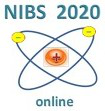Speaker
Description
Negative ion or anion density measurement is frequently done non-invasively by employing Cavity Ring-Down Spectroscopy (CRDS) diagnostic system. The optical cavity in the CRDS system is created by installing two highly reflecting concave mirrors on two collinear opposite ports of the ion source chamber; so that the cavity encloses the plasma as an absorbing medium. In a continuously fed cesium seeded ion source the CRDS mirror is exposed to Cs vapour environment. As a result, a finite probability of Cs deposition is possible on the mirror surface. In addition, ion sputtering and thermal distortion may degrade the mirror reflectivity and mirror alignment with time of ion source operation respectively. Distorted cavity alignment may affect the CRDS functionality. All the above issues increase themirror loss which can be misinterpreted as absorption losses and lead to an over-estimation of negative ion density for a long ion source operational window.The CRDS sensitivity and accuracy depend on its mirror reflectivity or rather “effective reflectivity”.Due to continuous change in reflectivity of the CRDS mirrors because of continuous Cs deposition, sputtering and distortion, the CRDS sensitivity and accuracy are also function of time and a correction factor is needed to take care of the overestimation in negative ion density value, if the time difference between the reference instance and measurement instance is significantly large.In this article, an algorithm is presented to find the correction scheme.
Summary
Cavity ring down spectroscopy is largely used as a diagnostic of negative ion density measurement in sources dedicated to NNBI (negative ion based neutral beam injector) systems, due to its high sensitivity and self calibrating nature.The methodology of negative ion density measurement for this spectroscopy is based on the difference of the decay rate of laser photons inside the cavity in presence and absence of absorbing medium.The mirror reflectivity which builds up the inherent mirror loss dictates the decay rate. Hence the decay rate can be modulated with time ,even in absence of any absorbing medium ,if the mirror coating and its surface condition changes with time .In a cesium seeded negative ion sources ,the cavity mirrors are exposed to cesium and ion sputtering and give rise to time dependent mirror loss.Though the negative ion measurement by CRDS is not affected by Cs deposition in short pulse cases as the reference decay (Ring down time in vacuum ) is also changed in the consecutive measurement. But , the application of CRDS in long pulse cases ,will yield an over estimated negative ion density value due to change in effective reflectivity within the pulse corresponding to Cs deposition and thermal effect induced cavity distortion. In this article an algorithm is described ,which can be used to quantify the loss corresponding to cesium deposition ,thermal effect and "true absorption" individually. These losses can be used to correct the over estimation of negative ion density used for long pulse operation to get the true value.

